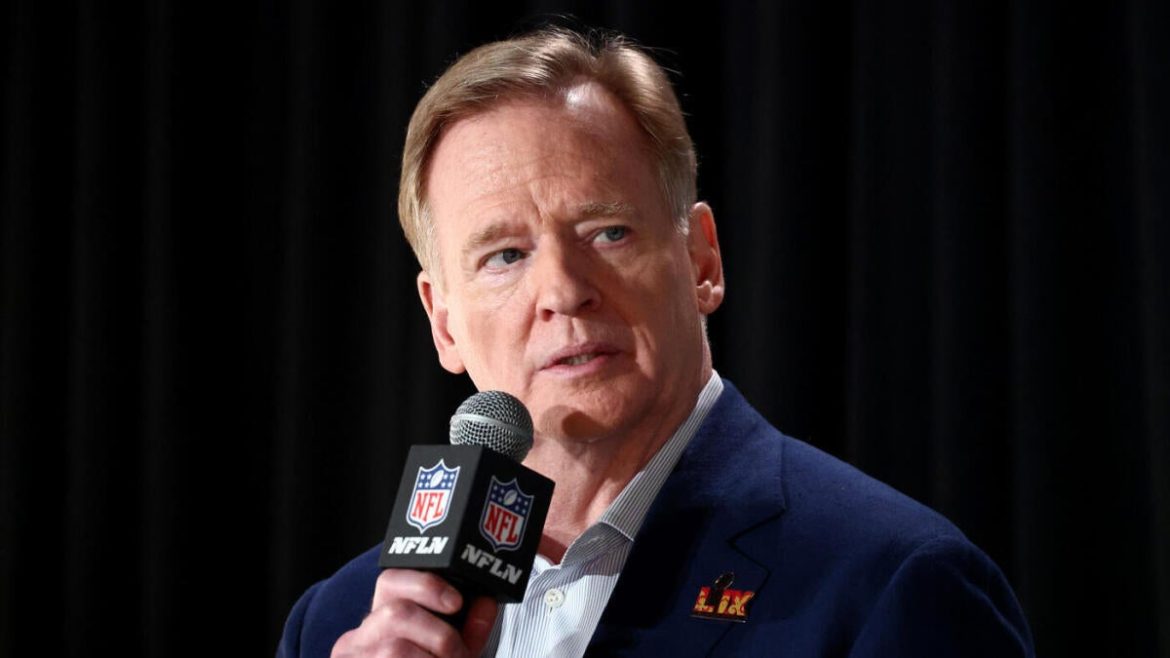NFL’s Bold Expansion: Toward a 16-Game International Schedule Within Five Years
The NFL is on the cusp of a transformative shift — expanding its international footprint to a scale never seen before. Roger Goodell, the NFL commissioner, has publicly laid out an ambitious vision of growing the league’s regular-season international games to 16 per year, potentially within the next five years. This expansion would nearly double the current international outings and mark a dramatic step in turning the NFL from an American staple into a global sporting phenomenon.
—
The Current Landscape of NFL International Games
As of now, the NFL holds a limited international presence with a handful of games played outside the United States annually. For the 2024 season, the league has scheduled about five international games encompassing traditional locations such as the United Kingdom and Mexico, as well as new destinations like Spain (Madrid’s Bernabéu Stadium) and Brazil (São Paulo). The upcoming 2025 slate is already confirmed to include eight international games spread across six countries, including Ireland, Germany, Spain, Mexico, Brazil, and the UK.
This burgeoning global schedule reflects the league’s strategic priority to cultivate markets beyond North America. Germany and the UK, in particular, have emerged as strongholds for fan engagement, with stadiums capable of hosting NFL games and enthusiastic support growing rapidly.
—
The Vision: 16 International Games Annually and a Longer Season
Roger Goodell’s statements at various interviews and events have consistently emphasized that the NFL sees the possibility of integrating 16 games abroad each season as “very near,” speculating this goal could be achieved within five years. This would be a massive leap from current numbers, likely requiring at least doubling the number of international games in a short timeframe.
Coupled with this international expansion is Goodell’s interest in extending the NFL regular season itself from 17 to 18 games. The rationale is straightforward: more games provide the scheduling flexibility needed to accommodate a robust slate of international contests. By expanding the total number of games, the league can maintain equitable play for all 32 teams — with a balance of home, road, and international games.
Such expansion raises intriguing possibilities: the entire league could see each team playing at least one game outside the U.S. every season, spreading the NFL experience to 16 different international venues, or alternatively doubling up international games in strong markets like the UK or Germany.
—
Logistical and Strategic Implications
Scheduling and Player Considerations
Transitioning to 16 international games annually would transform how the schedule is crafted. Games abroad introduce challenges such as travel fatigue, time-zone adaptation, and maintaining competitive fairness. Incorporating these considerations while preventing player burnout will be a crucial undertaking.
Additionally, expanding to an 18-game schedule has player health and safety implications, which must be balanced against commercial goals. Collective bargaining agreements (CBAs) influence such expansions, and Goodell has indicated that a return to a 16-game schedule (from 17) or movement to 18 games involves negotiations extending possibly to 2031.
Fan Engagement and Market Development
Increasing international games allows the NFL to deepen connections in existing lucrative markets and explore emerging ones. Europe, in particular, is a focal point: Germany has surged as a hotspot, coupled with renewed enthusiasm in the UK, Spain, and Ireland. South America, with events in Brazil, represents an untapped opportunity with immense potential for growth.
Strategically, a broader international schedule boosts the NFL’s brand worldwide, increasing broadcasting revenues and commercial partnerships. It also offers diverse fan bases a chance to experience NFL games live, essential for long-term market development.
—
Vision for the Future: Super Bowl and Beyond
Beyond regular-season expansion, Goodell has hinted at more ambitious plans, including holding the Super Bowl internationally. The idea of staging marquee NFL events abroad aligns naturally with the expanded international calendar, further cementing the league’s global appeal.
He also envisions Asia entering the NFL’s growth radar, signaling an intent to tap into massive sports markets in the future.
—
Conclusion: NFL’s International Ambition Set to Reshape the Game
Roger Goodell’s roadmap for the NFL’s international expansion signals a bold new era. Moving toward a regular season featuring 16 international games annually within five years—and possibly extending to 18 total season games—represents a radical reimagining of how the NFL operates. This strategy marries the growth potential of global markets with evolving fan appetites, positioning the NFL as a truly global league.
The challenges are non-trivial: logistical sequencing, player welfare, and contractual negotiations loom large. Yet, the league’s steady progress with increased games abroad, expanding into new continents, and committed leadership suggest these hurdles can be overcome.
In a few short years, the NFL experience may look very different—not just an American tradition but a worldwide sporting event played in a mosaic of diverse international venues. This transformation may not only grow the game commercially but reshape its cultural footprint for decades to come.





